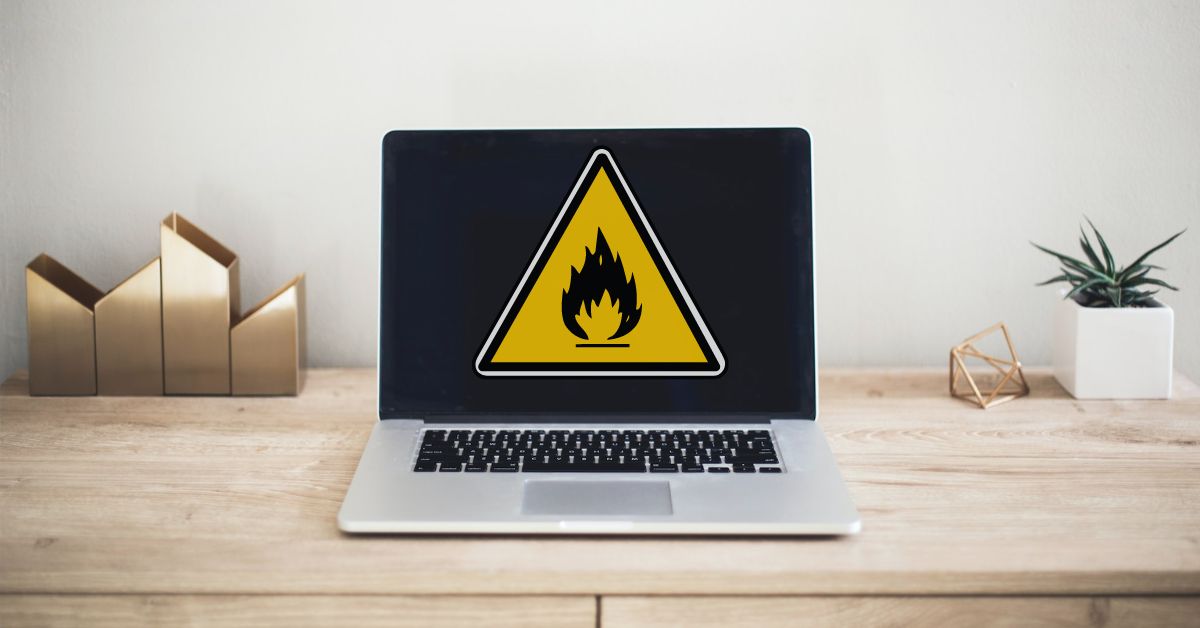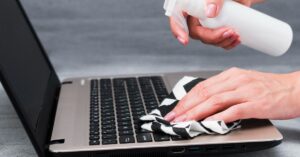Laptops, just like most modern-day devices, have become greater compact with every passing year. While there is no way the manufacturers might forestall enhancing the overall performance in their laptops, there’s a hassle that is regularly related to such high-performance machines overheating. A lot of instances, you may have noticed that your laptop receives hotter than usual. If it overheats to such a degree that it’s hard to function and the performance is affected, it can be a massive subject.
What Causes Laptop Overheating?
There can be more than one motive in the back of your laptop getting hot. For starters, in case your laptop might be in a place in which the ambient temperature is high. In the sort of case, it within reason ordinary to anticipate the machine to overheat. If you use the laptop in such a place where the air circulates is not enough, the laptop is prone to overheating.
There is likewise a possibility that the laptop’s air exhaust vents are probably blocked, stopping airflow and resulting in laptop overheating problems. The trouble could also arise if you are not using the original charging adapter. Another reason might be software or service that’s running in the background and consuming a lot of processing power.
Simple Tips To Keep Your Laptop from Overheating
1. Use a Laptop Cooling Pad

Investing in a laptop cooling pad is a smart choice, in particular in case you regularly use your laptop for resource-extensive tasks. Cooling pads are designed with integrated fans that help beautify the laptop’s cooling capabilities. Simply area your laptop at the cooling pad, and the additional airflow will assist in dissipating heat more efficiently.
2. Clean the Vents Regularly

If you’ve used your laptop for a while, you’ll know that there’s a whole lot of dirt accrued across the vents and fans. This reduces the cooling and restricts airflow. Besides using a laptop cooler, ease out the dust with the usage of an air blower. Slowly blow air through the cooling vents on the side or back of the laptop. If possible, take the laptop to a service center and ask for an upkeep run to be done. Your laptop will not only run cooler, but you’ll see that it runs a tad faster too.
3. Use The Right Charger

If your laptop suddenly begins to heat up while you put it on charge then possibilities are it is probably because of a faulty charger. Sometimes even a small cut inside the cord of the charger can reduce to rubble the charging velocity and may bring about overheating of your laptop. It is generally advised that you use the charger provided with the laptop provided in the box.
Also Read: Is It Okay To Use Laptop While Charging? Why Or Why Not?
4. Avoid Direct Sunlight

Heat from direct sunlight can significantly raise your laptop’s internal temperature. Always use your laptop in a shaded area or indoors to prevent the sun from adding to the heat load.
5. Maintain a Clean Environment

The environment in which you use your laptop plays a crucial role in its temperature law. Make sure your laptop is placed on a flat, hard surface that lets in proper airflow. Avoid putting it on soft surfaces like beds or couches, as they can block vents and restrict air circulation. Also, retaining your workspace easily and dirt-free can prevent dirt from gathering within the laptop’s cooling machine, which can hinder warmth
Also Read: How to Clean Laptop: Pro Tips and Step-by-Step Guide
6. Change Power Settings
Most modern laptops offer power management options that allow you to adjust the performance. Lowering your laptop’s power settings can help reduce heat during low-performance tasks. Additionally, consider using the “battery saver” mode when unplugged, as this mode tends to squeeze the processor to conserve power and reduce heat generation.
To create a custom power plan, you will have to go through the following steps
- Click on the Start icon and search Control Panel in the search box.
- Select the Control Panel option.
- Click on Hardware and Sound.
- Select Power Options.
- Select Create a Power Plan.
Like this, you can create your own power settings. While this isn’t the most effective solution for your laptop overheating problem, this will help you extend your laptop battery life.
7. Change CPU Thermal Paste

Every laptop has a CPU and uses thermal paste to transfer the heat generated by the CPU to the cooling solution (heat sink and cooling fans). Sometimes, if the laptop manufacturer uses poor-quality thermal paste, it can deteriorate in two years. Using the laptop in hot and humid conditions can damage it even faster.
In such a case, you may have to open the laptop and get a professional to replace the thermal paste with a good one. You can see the best thermal paste from brands like Arctic, Cooler Master, Noctua, and Thermal Grizzly. Before buying thermal paste, read reviews and go for the one that has got the best rating. Then, with the help of a certified laptop service engineer, replace the existing thermal paste with a new one of high quality. This should prevent a lot of overheating problems on your laptop.
Final Words
Hopefully, the solutions which are listed here might have helped you in identifying the problems that might be causing your laptop to overheat. By implementing these simple however powerful tips, you may make certain that your laptop remains a reliable and effective associate for all your digital endeavors.




